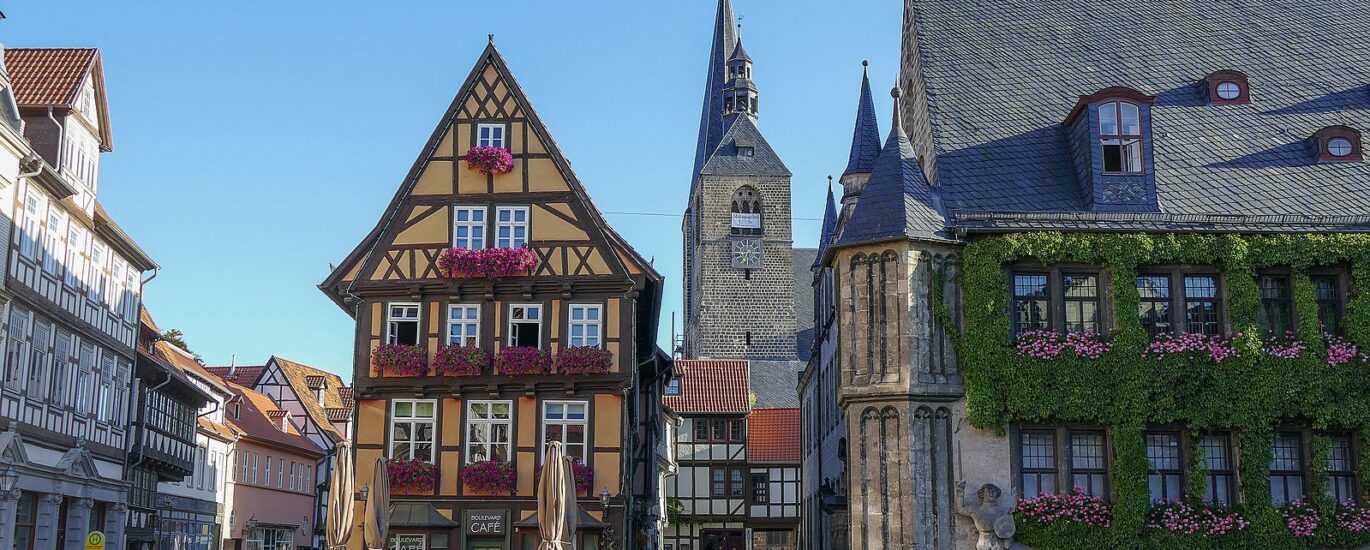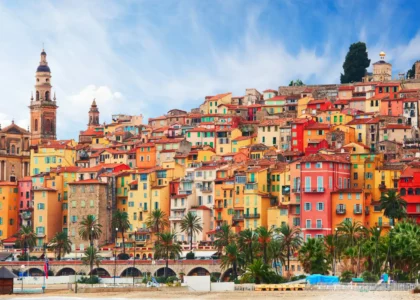Germany, a country renowned for its rich history, stunning landscapes, and vibrant culture, is home to some of the most picturesque medieval cities in the world. These cities, with their cobblestone streets, half-timbered houses, and towering cathedrals, offer a glimpse into a bygone era that feels almost magical. Once you’ve experienced the charm of these medieval gems, modern cities might just pale in comparison. Here’s a journey through some of Germany’s most gorgeous medieval cities that will leave you spellbound and forever change the way you view urban landscapes.
1. Rothenburg ob der Tauber: A Fairy-Tale Come to Life
Nestled in the heart of Bavaria, Rothenburg ob der Tauber is the epitome of a medieval fairy-tale town. With its well-preserved city walls, narrow winding streets, and colorful half-timbered houses, Rothenburg feels like it’s been plucked straight out of a storybook. The town’s name, which translates to “Red Fortress above the Tauber River,” hints at its historical significance as a fortified settlement.
One of the most iconic landmarks in Rothenburg is the Plönlein, a small square that features a picturesque yellow half-timbered house flanked by two towers. This spot is so photogenic that it has become one of the most photographed locations in Germany. The town’s medieval walls, which stretch for over two miles, offer stunning views of the surrounding countryside and provide a fascinating glimpse into the town’s defensive past.
Rothenburg is also home to the Medieval Crime and Justice Museum, which offers a chilling yet fascinating look at the legal systems of the Middle Ages. From torture devices to witch trials, the museum provides a stark reminder of the darker side of medieval life.
2. Heidelberg: A Romantic Medieval Haven
Heidelberg, located in the southwestern part of Germany, is a city that effortlessly blends medieval charm with romantic allure. The city’s most famous landmark, Heidelberg Castle, is a sprawling ruin that sits majestically on a hill overlooking the Neckar River. The castle, which dates back to the 13th century, is a prime example of Renaissance architecture and offers breathtaking views of the city below.
The Old Town (Altstadt) of Heidelberg is a treasure trove of medieval architecture. The Hauptstrasse, one of the longest pedestrian streets in Europe, is lined with charming shops, cafes, and historic buildings. The Church of the Holy Spirit, with its towering spire, is another must-see landmark that dominates the city’s skyline.
Heidelberg is also home to one of the oldest universities in Europe, Heidelberg University, which was founded in 1386. The university’s Studentenkarzer, or student prison, is a quirky attraction that offers a glimpse into the lives of misbehaving students in the 18th and 19th centuries.
3. Bamberg: A UNESCO World Heritage Site
Bamberg, a UNESCO World Heritage Site, is often referred to as the “Rome of Germany” due to its seven hills and stunning architecture. The city’s medieval old town is a labyrinth of narrow streets, charming squares, and historic buildings that have remained remarkably well-preserved over the centuries.
One of the most iconic landmarks in Bamberg is the Bamberg Cathedral, a masterpiece of Romanesque and Gothic architecture. The cathedral, which dates back to the 13th century, is home to the Bamberg Horseman, a mysterious statue that has puzzled historians for centuries. The Old Town Hall, which is perched on an island in the middle of the Regnitz River, is another must-see attraction that showcases the city’s unique architectural style.
Bamberg is also famous for its beer, particularly its smoked beer (Rauchbier), which has a distinct flavor that is unlike any other beer in the world. The city’s breweries, many of which have been in operation for centuries, offer a fascinating glimpse into the region’s brewing traditions.
4. Regensburg: A Medieval Trading Hub
Regensburg, located on the banks of the Danube River, is one of the best-preserved medieval cities in Germany. The city’s history dates back to the Roman era, and its medieval old town is a testament to its importance as a major trading hub during the Middle Ages.
One of the most iconic landmarks in Regensburg is the Stone Bridge, a 12th-century bridge that spans the Danube River. The bridge, which was once a vital link in the trade routes between northern and southern Europe, is a marvel of medieval engineering. The Old Town Hall, with its Gothic architecture and historic Reichssaal (Imperial Hall), is another must-see attraction that offers a glimpse into the city’s political significance during the Middle Ages.
Regensburg is also home to the Regensburg Cathedral, a stunning example of Gothic architecture that dominates the city’s skyline. The cathedral’s intricate stained glass windows and towering spires are a sight to behold, and the interior is equally impressive with its ornate altars and sculptures.
5. Quedlinburg: A Timeless Medieval Gem
Quedlinburg, located in the Harz Mountains, is a small town that is often overlooked by tourists but is a true hidden gem. The town’s medieval old town, which is a UNESCO World Heritage Site, is a maze of narrow streets, half-timbered houses, and charming squares that have remained virtually unchanged for centuries.
One of the most iconic landmarks in Quedlinburg is the Quedlinburg Castle, which sits atop a hill overlooking the town. The castle, which dates back to the 10th century, is a prime example of Romanesque architecture and offers stunning views of the surrounding countryside. The St. Servatius Church, which is located within the castle complex, is another must-see attraction that is home to a treasure trove of medieval art and artifacts.
Quedlinburg is also famous for its half-timbered houses, many of which date back to the 16th and 17th centuries. The town’s Fachwerkmuseum, or Half-Timbered Museum, offers a fascinating look at the construction techniques and history of these iconic buildings.
6. Nuremberg: A Medieval Powerhouse
Nuremberg, one of the largest cities in Bavaria, is a city that seamlessly blends medieval history with modern innovation. The city’s medieval old town, which is surrounded by imposing city walls, is a treasure trove of historic landmarks and architectural wonders.
One of the most iconic landmarks in Nuremberg is the Nuremberg Castle, a sprawling complex that dates back to the 11th century. The castle, which sits atop a hill overlooking the city, offers stunning views of the surrounding area and is a prime example of medieval fortification architecture. The Old Town, with its charming squares, historic buildings, and bustling markets, is another must-see attraction that offers a glimpse into the city’s rich history.
Nuremberg is also famous for its Christmas Market, which is one of the oldest and most famous in Germany. The market, which takes place in the city’s main square, is a magical experience that transports visitors back in time with its traditional crafts, festive decorations, and delicious treats.





